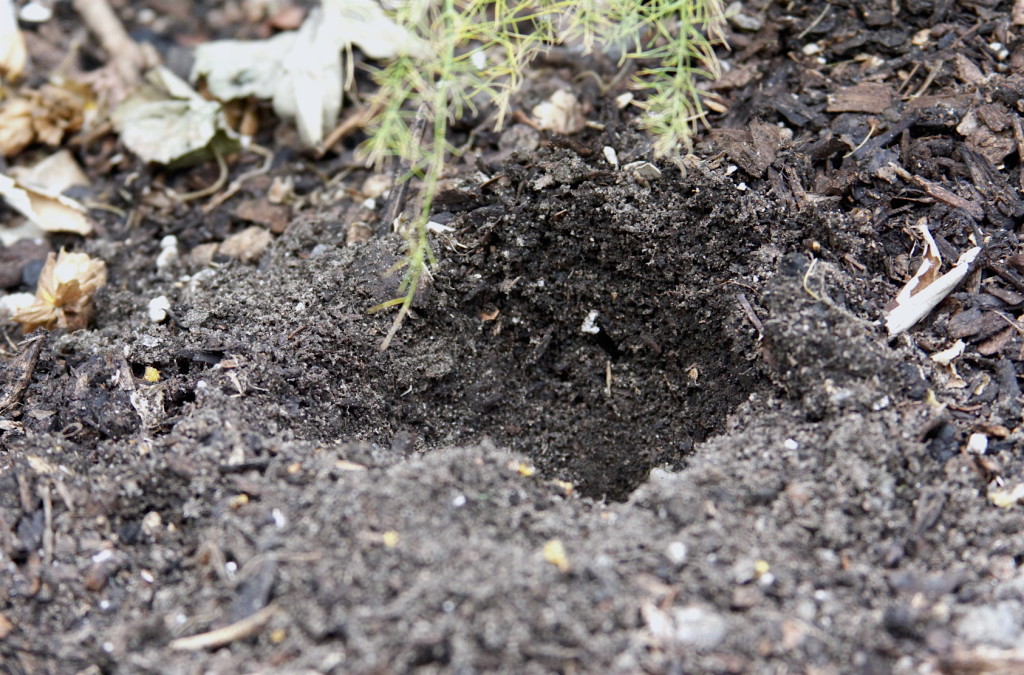
Some of the usual suspects were back on the scene this year. A few veterans found other work in the neighborhood, and a few greenhorns hit our streets as well. Here’s a parsley worm chomping its way through our herb garden. We know that the lovely Black Swallowtail butterflies we’ve seen flitting about are their parents, and we know their preferred plants to lay eggs on, so we know which ones to pull now. A few inevitably make it to maturity, but they mostly confine themselves to a couple of their favorite spots, and we have enough to spare a leaf or two.
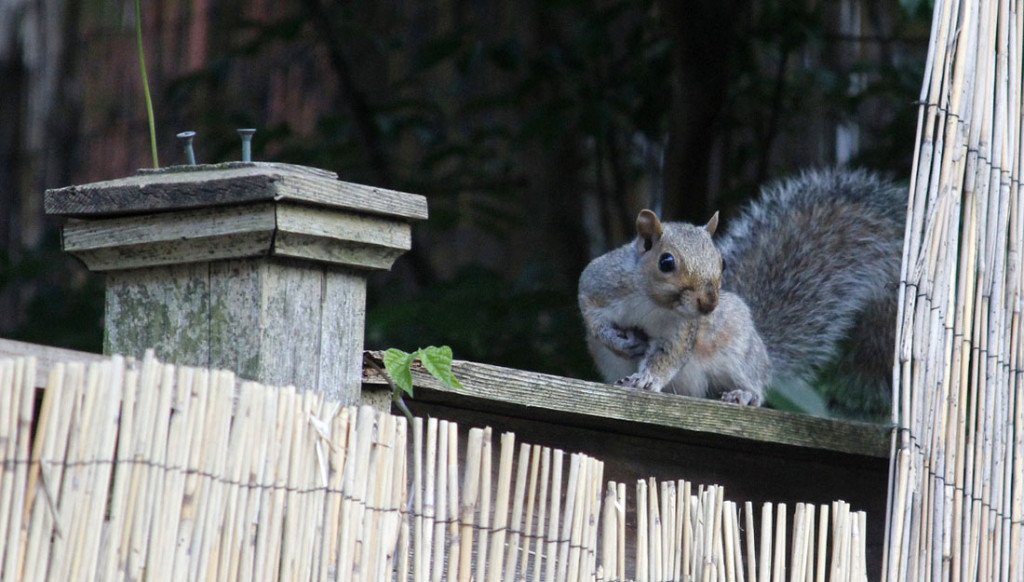
Knock on wood, the squirrels which usually ravage the tomatoes and cucumbers were off on other nefarious business for the most part. My main strategy with them has evolved over the years from prevention to shock and awe. I just try to produce so much food that they are overwhelmed. I don’t mind if they take a few bites here and there, but they can’t have it all.
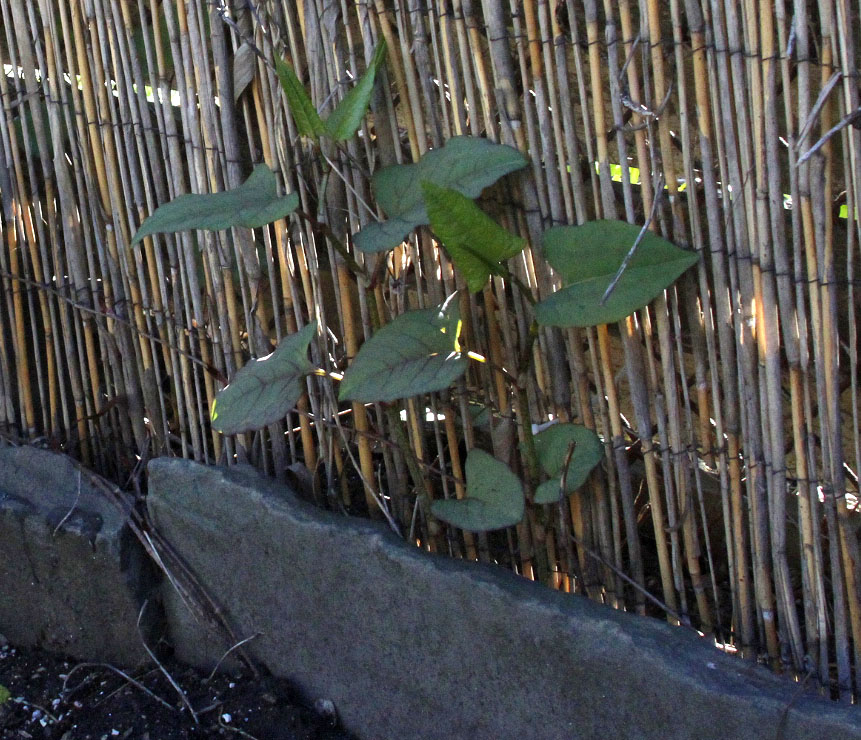
Twenty-five feet of concrete away from a giant Japanese Knotweed is this little offshoot of it. Left untamed, it would take over the garden. It’s possible that the mother is sending roots underground this far to sneak up on us. Pulling them up is nearly pointless, as their rhizomes and root system can regenerate stems and foliage in a matter of days, but we do it anyway. Highly aggressive, this invasive species has taken over large swaths of the country as well as the U.K and Europe. It’s present in 42 states. It’s on a list of the World’s Worst Invasive Species. Graduate theses have been written on its history. Scientific papers have been published on eradicating it, and only are able to present partial solutions. About twice a year, we go after the larger one in the back area. The problem is, it’s sandwiched in the tiny space between our fence and the neighbor’s, so we can’t access its roots. So it keeps growing back. We basically reach over the fence with a paint scraper mounted to the end of a pole and hack at the stems. If we don’t, by midsummer it have grown from nothing to 8′ tall and will shade the back corner.
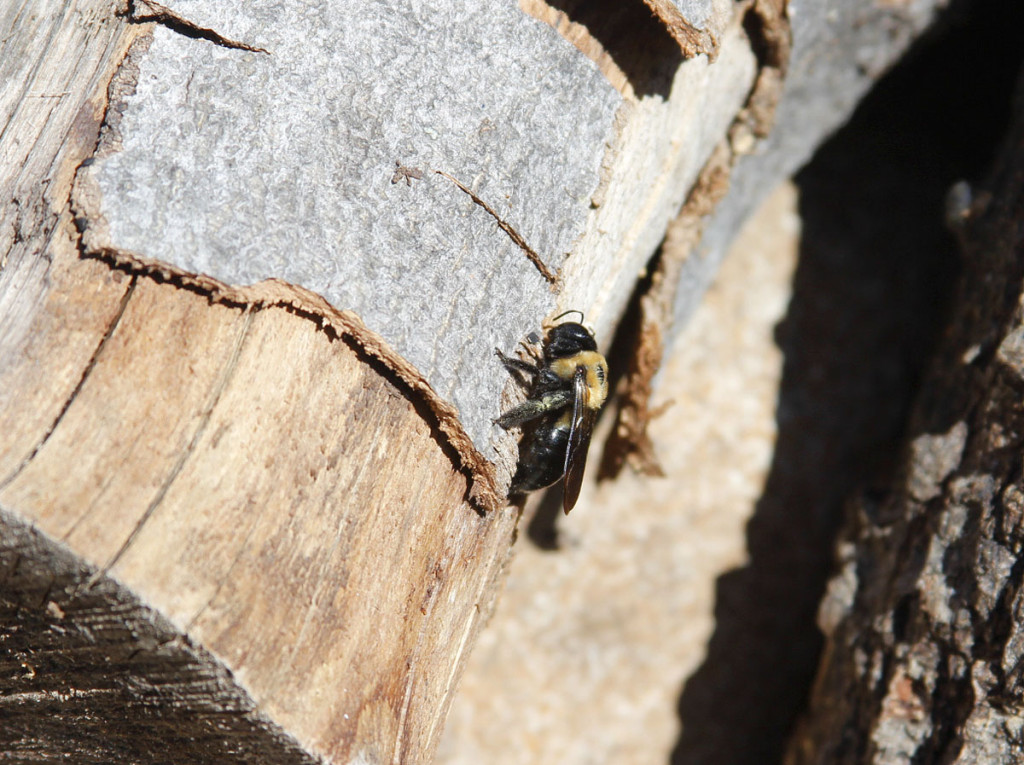
What looks like a lovely bumblebee plucked from the pages of a children’s book may be what’s called a Carpenter Bee or Wood Bee. These guys have a bit darker coloring than bumblebees and fly around kind of lazily, as if they are a bit drunk. They may be drunk on bits of wood they’ve chomped out of your house, is the problem. What they do is bore perfectly round holes in wood walls and fences, build a little burrow inside, lay an egg, and then move on. They don’t seem to tear the place apart in droves like termites like– they are more like lone wolves, but in numbers. I ended up trapping a couple of dozen by the end of the season, after I got tired of them chewing up the walls of my place. You can actually hear them chomping.
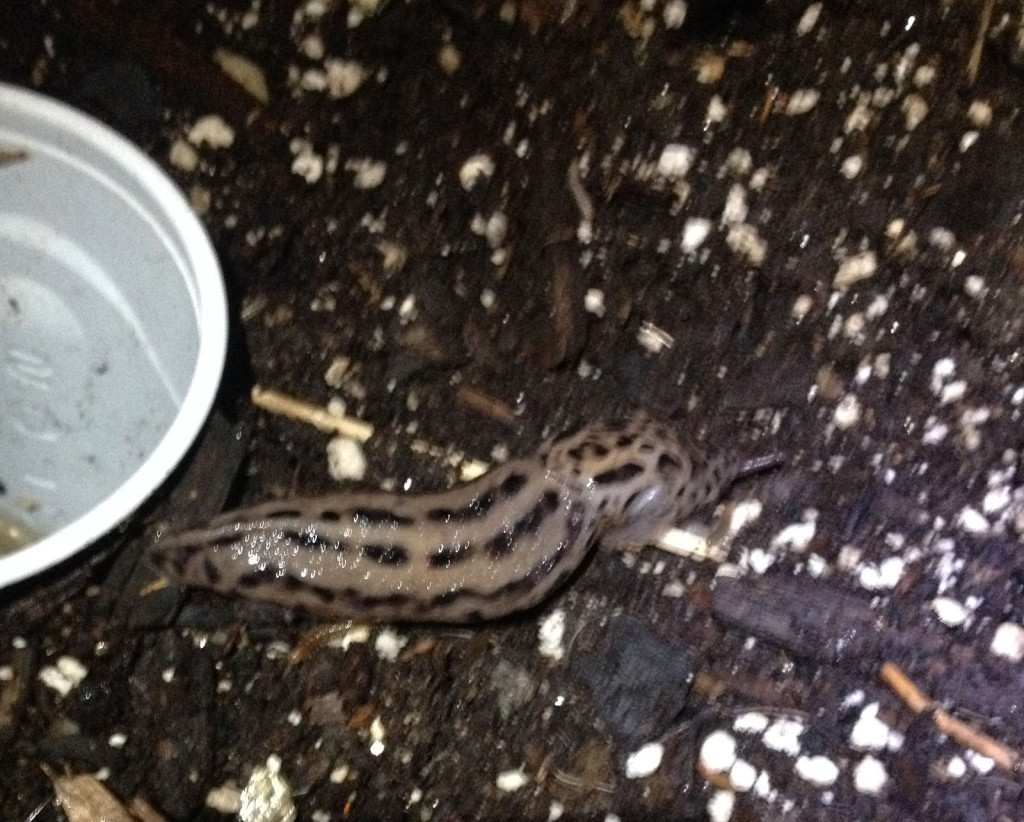
My partner in gardening started hunting slugs by flashlight. I knew they were around, but wasn’t really feeling the fire like she was… she became a vigilante for the first month of the season and dramatically cut down on the number of poor seedlings which were decimated by these slimy invaders. We tried the old beer trap solution, but those are pretty gross and need messy maintenance after each rain. Dumping salt on them does the job… but also salts your soil on the downside. Eventually we settled on picking them up with a stick and dropping them into a cup of soapy water. This one’s about four inches long—New York City sized.
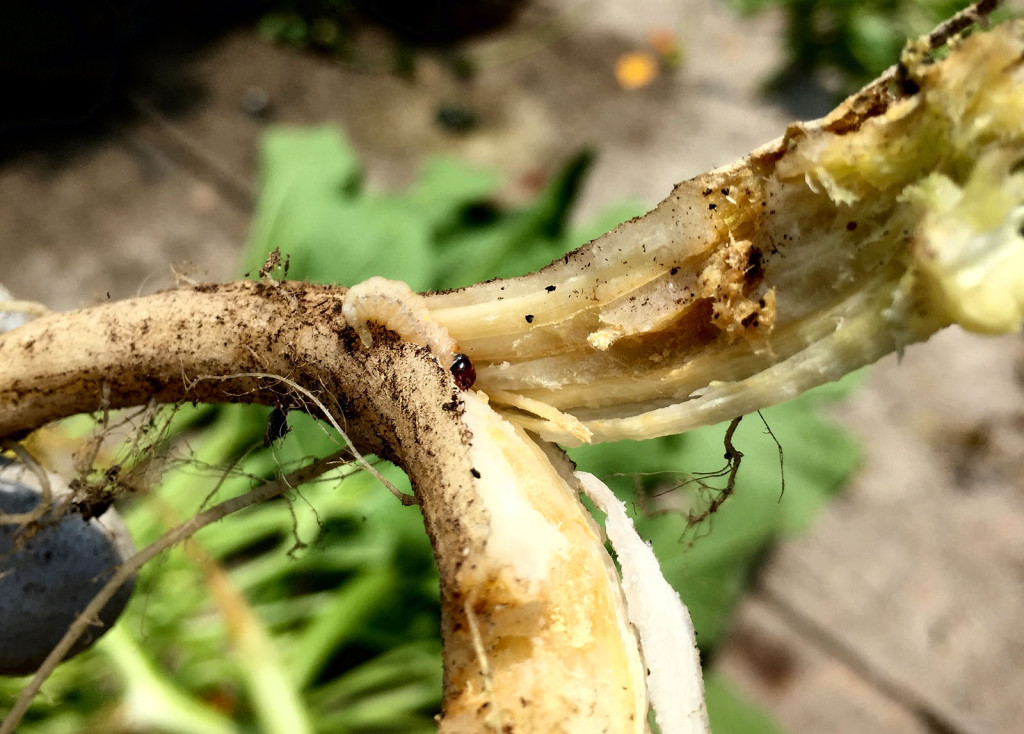
Another discovery were these Squash Borer larvae. Healthy-looking cucumber plants would get sick and die, and this was one of the causes. Later we would put up sticky traps for their adult Spotted and Striped Cucumber Beetles to stick to before they could reproduce.
These Asiatic Garden Beetles made their first known appearance this year, although they may have been present before. Usually active at night, this shot was taken during the day by a greedy straggler pulling a double shift. They shredded the basil for a while, but eventually the basil got the upper hand. Many holes left in many leaves, and they may be spreading disease as well.

Here’s another beetle, very large and iridescent. At first glance I thought it was a Japanese Beetle. But is was too large, and not like the ones I remember growing up in Massachusetts that were the bane of my mother’s garden. Also, those appeared in the thousands and we only had one or two.
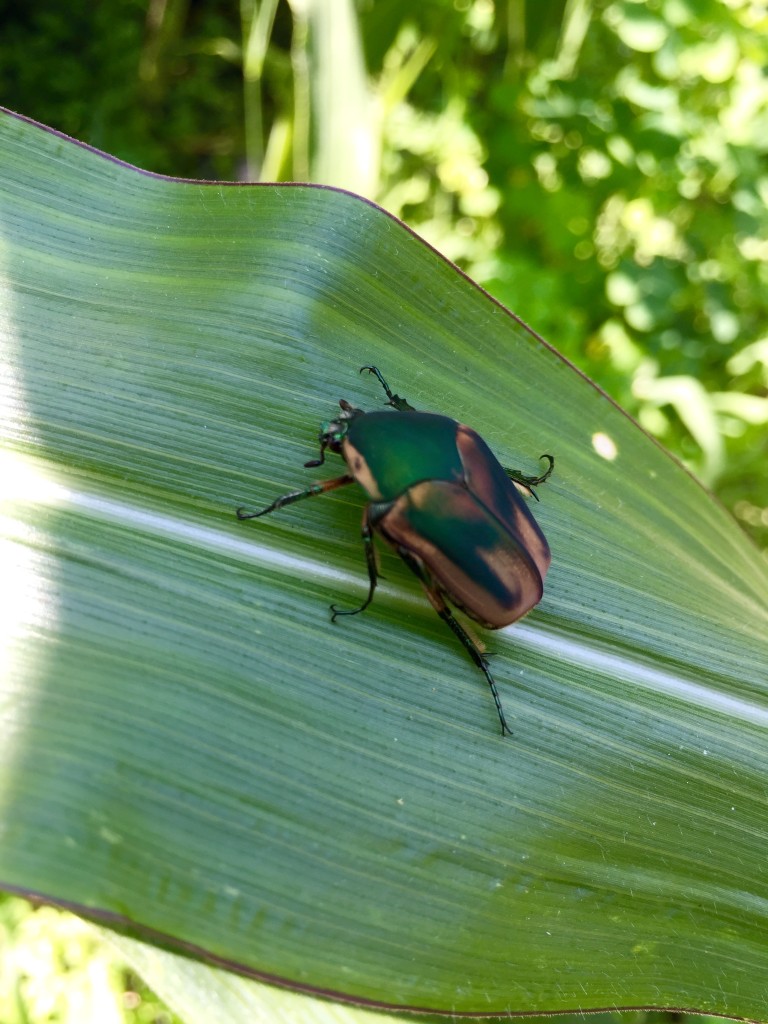
Now, after some image searching, I’ve come full circle—it does look like a Japanese Beetle after all—just not fitting with my memory.

These yellow sticky traps are supposed to catch many of our garden pests, including both spotted and striped squash borers.
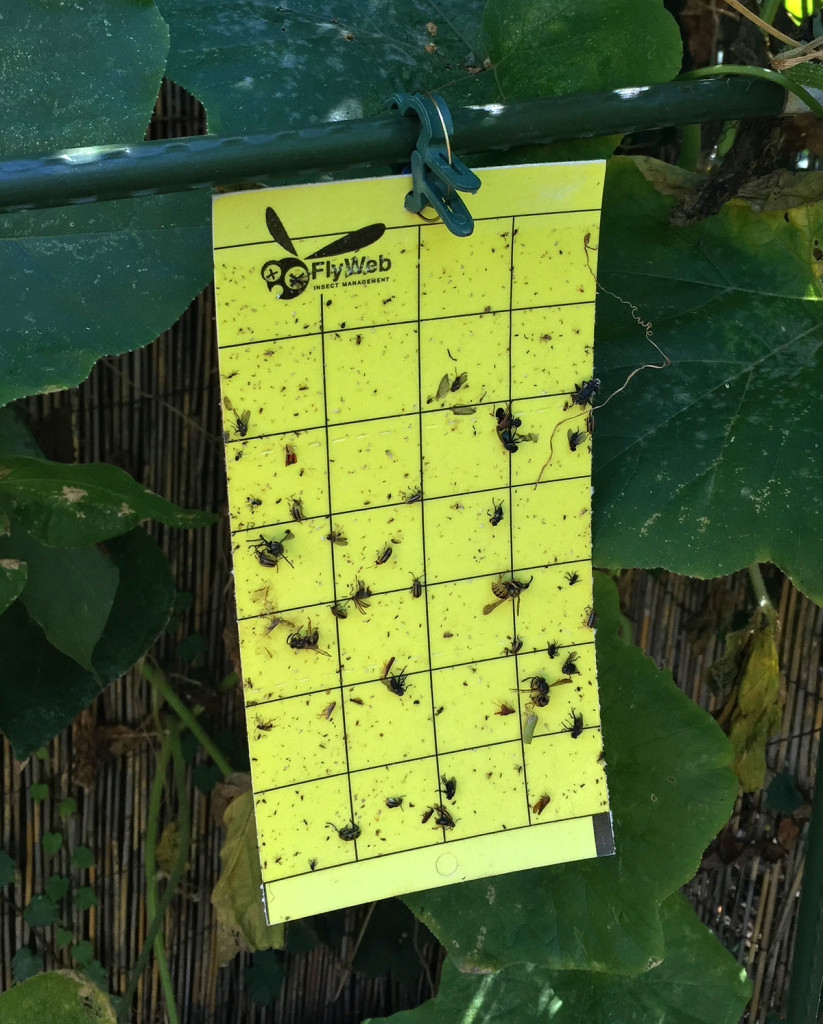
A few weeks later, we did indeed see a few squash borers caught up in them… along with many other pests including the odd housefly. By that time in the season (mid-September), the worst damage had been done. We will put these up early in the season next year, as the larvae hatch and start hunting for yellow cucumber and squash flowers. I’m thinking we should also plant ‘decoy’ squash which will purposely draw them in, and then we can pull them and send them to compost, leaving the real transplants safer when their time comes to make it outside.

Our Kobocha squash plant’s reluctance to produce more than one fruit may have been partially due to the powdery mildew evidenced on their leaves, which gradually sicken the whole plant if not controlled. We used neem oil to slow the mildew’s progress, but it’s a damp and shady part of the garden. We cut down on the irrigation in that area as well.
Aphids didn’t do excessive damage, but they keep coming back every week or two and let’s be honest, they’re gross. They suck the juices out of the leaves and stems. They love the new and tenderest leaves of the collards and kale. Sometimes this will cause the leaf to curl or grow oddly. We used Jack’s on them and blasted them off with the hose occasionally too.

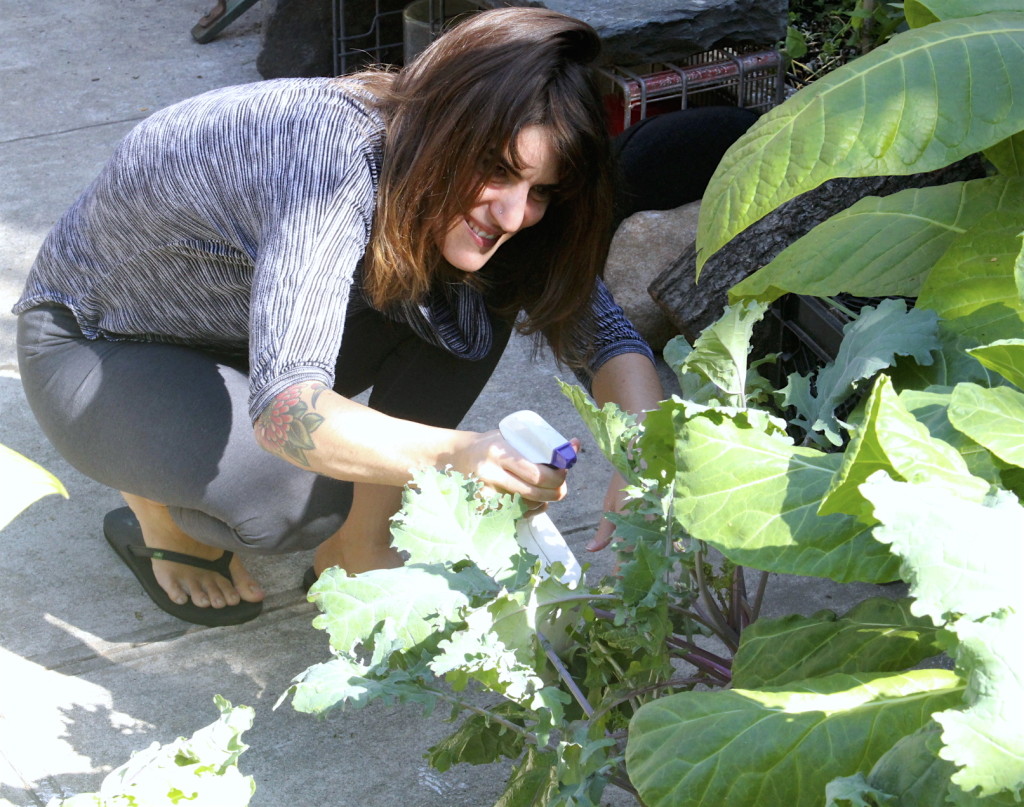
Garden Snails. These antisocial terrors lull you into complacence with their delightful spirally shells and their deceitfully glacial manner. Don’t let them fool you—they don’t hang around for you to admire their looks. Not sure how much damage they caused, but probably a fair amount. I often found them clinging to the side of the fence, high off the ground. They seem to like hanging around the pole beans. I’m assuming they come out at night to collaborate on their diabolical project. But I have diabolical projects of my own at night, so we rarely cross paths—if we do, only one of us lives to blog about it.
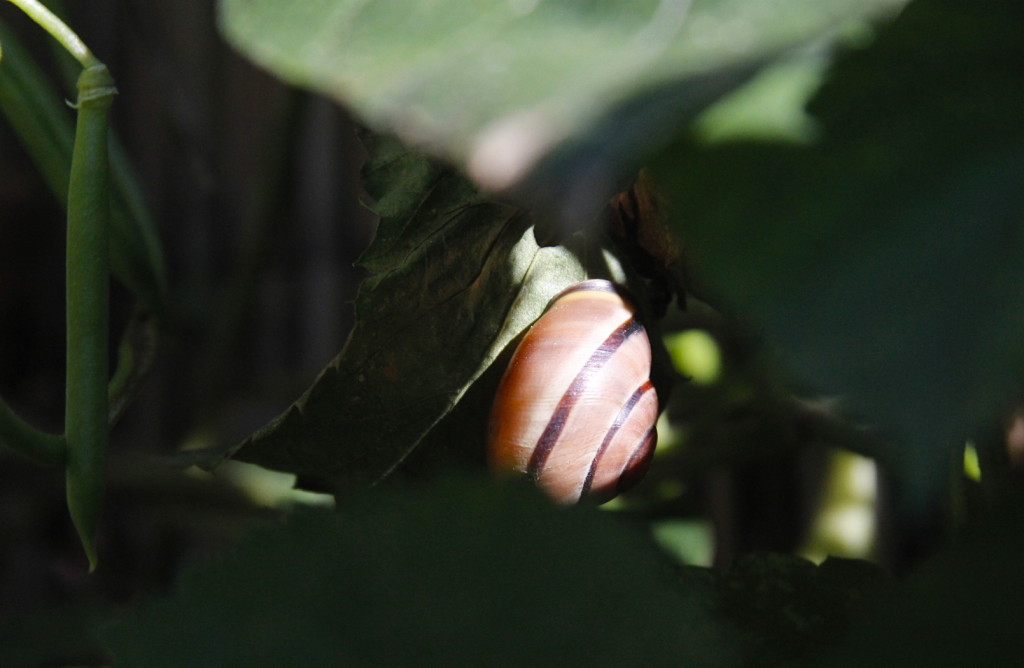
Semi-mysterious foxholes dug around the joint occasionally appear… I’m going to go with squirrels on this one.
